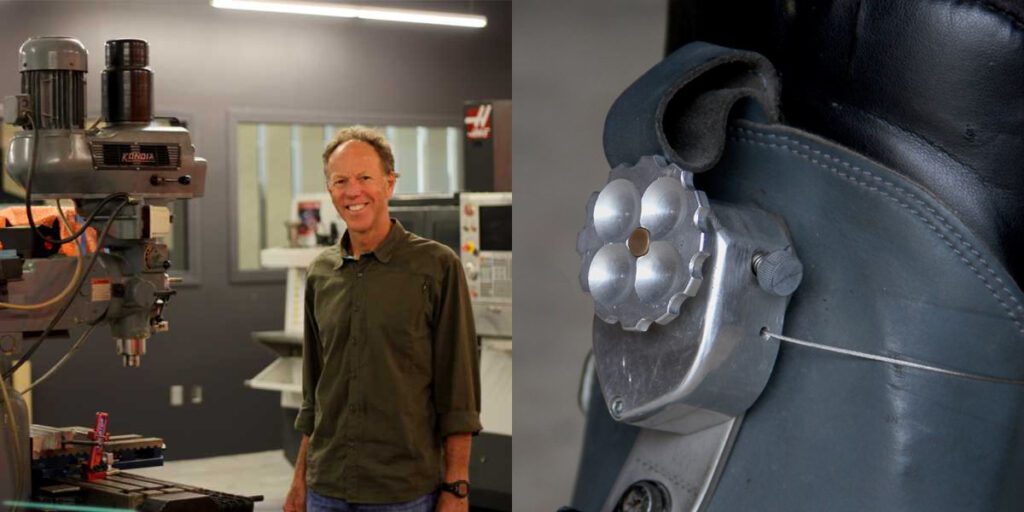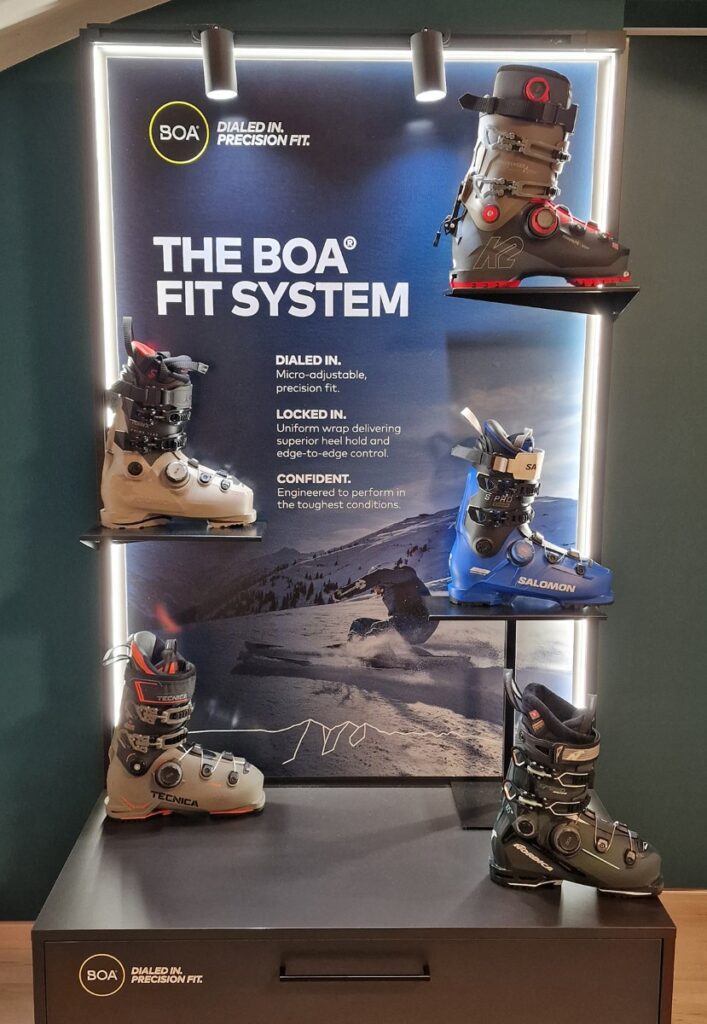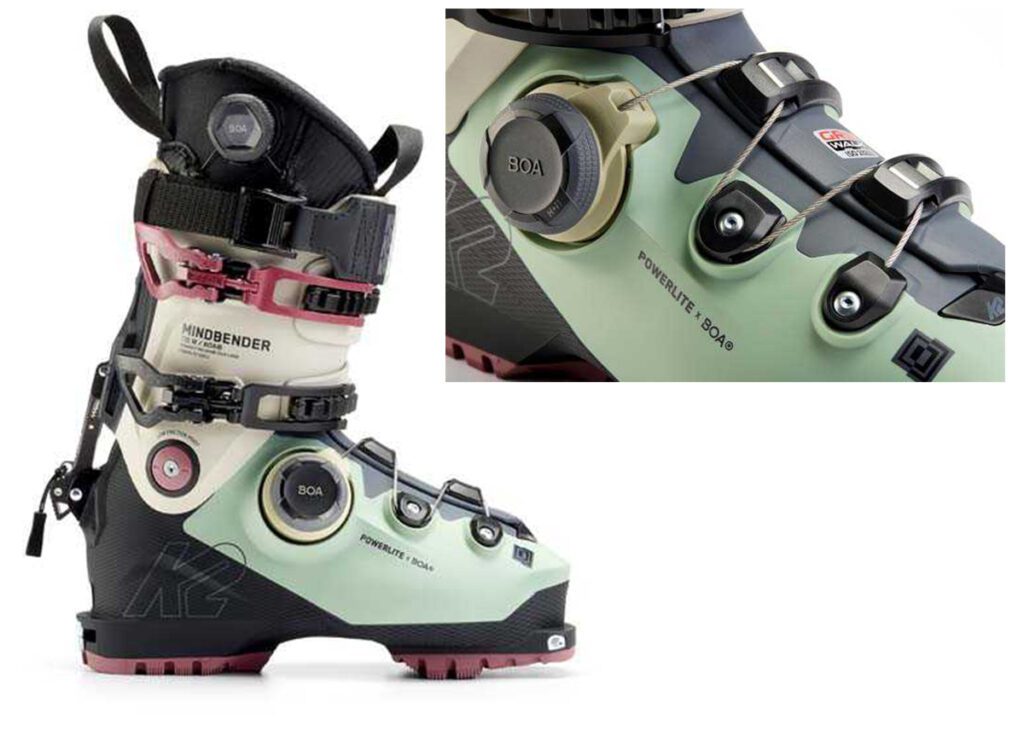
BOA, dialling in the ski boot for the ultimate fit
BOA Technology: A Journey of Innovation
BOA Technology was founded in 2001 in the Rocky Mountains by Gary Hammerslag, a passionate snowboarder, surfer, and entrepreneur. His pioneering vision was driven by a simple yet powerful idea: to create a more efficient system for tightening and adjusting snowboard boots. This necessity led to the development of the dial mechanism, which has since revolutionized the outdoor gear market by replacing traditional laces and buckles.

Versatile Applications of BOA Technology
Designed to offer a customizable fit, the technology enhances performance across a variety of activities, including skiing, snowboarding, mountain biking, hiking, and golf. As its popularity has grown, BOA has expanded its collaborations with numerous brands in the sports, outdoor, and lifestyle sectors. By continuously innovating and refining its technology, BOA has established itself as a staple in the industry with a promising future.
Ensuring Trust: The BOA Commitment
At the core of the technologies’ reliability is the Performance Fit Lab, a cutting-edge facility dedicated to rigorous product testing and innovation. Their engineers and scientists subject their products to extreme testing conditions, reminiscent of SAS or Navy Seal trials, involving freezing temperatures, constant pounding, and submersion in water and mud. This thorough testing ensures that each product can withstand the most challenging environments.
Furthermore, with 350 field testers who rigorously test the gear in punishing conditions-from muddy trails to waist-deep powder-to ensure the products exceed durability expectations. This meticulous approach to testing allows outdoor enthusiasts to perform at their best, confident in the reliability of their gear.
For added peace of mind, BOA offers a lifetime guarantee on its lacing systems. Should any part fail, it will be replaced free of charge. Many retailers stock a first aid kit of spare parts, though these often remain unused, highlighting the robustness of the system.

BOA’s Impact on Ski Boots
This technology has now made its way into skiing, bringing a game-changing innovation to ski boots. The new range of ski boots has been meticulously designed to enhance performance on the slopes. With over 40,000 hours of annual testing conducted by 892 field testers and more than 150 different tests contributing to over 18,000 hours of development, the quality and reliability of these products are assured.
These boots are engineered to improve power transfer, enhancing the connection between the boot and ski by up to 6%. This innovation allows for more efficient energy transfer during turns, enabling skiers to navigate varied terrain with enhanced responsiveness. The boots also improve stability and control during turns by up to 10%, providing skiers with the confidence needed to tackle challenging runs.
A wide range of ski brands, including Atomic, Dalbello, Fischer, Head Ski, K2 Ski, La Sportiva, Leki, Nordica, Salomon, Scarpa, Scott, and Tecnica, have integrated BOA technology into their products.

BOA on K2 Mindbender Ski Boots
The evolution of ski equipment is something we truly appreciate, and this excitement led Charlotte and myself to try out the new ski boots from the K2 Mindbender BOA range. I chose the men’s K2 Mindbender 130 BOA ski boot, while Charlotte opted for the women’s K2 Mindbender 115 BOA. Both boots feature Grip-Walk rubber soles for enhanced grip when standing and walking, as well as the Powerlock-spyne, which can be released when touring uphill or walking. These boots also come with integrated tech fittings at the toe and heel, making them compatible with both regular alpine bindings and touring pin bindings. This combination results in a highly versatile boot designed to make the most of the mountain.
The Mindbender boots are equipped with two dials. The first is located on the boot’s inner shell, which securely hugs the foot before the outer shell is tightened, similar to some snowboarding boots. The second dial is found on the lower section of the outer shell. The upper shell still uses two buckles and one power strap for additional support. These boots are easy to put on, and adjustments are quick, allowing you to dial in your preferred fit with ease.

Once on the mountain, adjusting the fit is a simple task that ensures your foot remains secure while skiing. This system requires much less fumbling and tweaking compared to traditional four-buckle boots, which need constant adjustment throughout the day as your feet swell and contract.
From the first run of the day, whether releasing the boots for lunch or tightening them before heading back out for ski touring or après-ski, a simple twist or release of a dial achieves maximum comfort and precision. This ease of adjustment greatly enhances the skiing experience, allowing you to focus more on skiing and less on gear adjustments.
During ski touring, the BOA system proves particularly comfortable once loosened, with the Powerlock-spyne released and the buckles and power strap relaxed. It feels akin to going uphill in your most comfortable slippers, and with a few tweaks at the mountaintop, the boots are ready for the descent.

Charlotte, relatively new to ski touring, found that using her trusted boots and having the ability to quickly tweak the fit while on the move gave her significant confidence and peace of mind, allowing her to focus solely on the ski touring experience. A perfect example of this was when a storm approached while we were ski touring up the mountain; we managed to adjust our equipment for the descent in just a few minutes.
Once the boots were dialed in and snug, they performed exceptionally well across various conditions-carving on groomed pistes, navigating bumps, handling powder, and tackling choppy, uneven terrain. We found the boots met our expectations across all these challenges.
In terms of power transfer, or in simpler terms, the process by which the initial movement of your leg and foot translates through the equipment to the ski and ultimately guides it, the boots excel. Very little energy is lost during this transfer, and the boots effectively communicate with the ski. The BOA dial ensures even tightening across the area, preventing hotspots where one buckle might otherwise be too tight and cause discomfort.
For Charlotte, the BOA system made a noticeable difference. She often experienced some pain over the bridge of the foot, but with the BOA system, the pressure is distributed evenly over the entire bridge, eliminating the discomfort.
Charlotte’s experience is further enhanced by the BOA system, particularly because she has an anterior cruciate ligament injury, which can make long days of skiing uncomfortable. The BOA system, combined with the Grip-Walk feature and Walk Mode, offers a more comfortable experience that is easier on the knees. With a quick click of the BOA and adjustment of the Powerlock-spyne into Walk Mode, the boots become more flexible, making them ideal for walking through town or sitting for lunch. Even navigating the typical “stairs-down-to-toilets” found at mountain restaurants becomes a breeze.
BOA: What is Next?
BOA is known for never resting on its laurels, and the latest word is that the brand has released the next evolution in ski boots. These boots feature outer shells with dual BOA systems for enhanced performance and comfort throughout the boot. We are eager to test this new dual BOA system. If only all clothing had BOA systems; my trousers could certainly benefit after indulging in too much Tartiflette!
For more details or to purchase the boots, consider visiting BOA.
Originally reviewed for Bespoke Black Book
